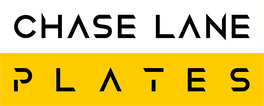The Ultimate Guide to Motorbike Number Plates: Sizes, Styles, and Legal Essentials
Motorbike number plates may seem like a small detail, but they play a big role in both the legal identity and the aesthetic personality of your bike. Whether you ride a sports bike, cruiser, scrambler, or café racer, your number plate is more than just a combination of letters and numbers—it’s a blend of regulation, style, and practicality.
In this article, we’ll explore everything you need to know about motorbike number plates: why they’re different from car plates, how they’re made, the available sizes and finishes, how to mount them, and some cool facts you might not know.
What Are Motorbike Number Plates and Why Are They Specific?
A motorbike number plate is a legally required form of vehicle identification, assigned to a motorcycle by the DVLA (Driver and Vehicle Licensing Agency) in the UK. These plates display your bike’s registration number and are used by law enforcement, ANPR (Automatic Number Plate Recognition) systems, and the general public to identify your vehicle.
Unlike cars, motorbikes are only required to have a rear plate. This is mainly due to the design and aerodynamics of motorcycles. Attaching a front plate would be impractical, potentially dangerous, and would ruin the sleek lines that most riders love.
Motorbike plates are also subject to specific size and visibility rules to ensure they are easy to read—whether your bike is parked, cruising down a country lane, or zipping through the city.
How Is a Motorbike Number Plate Made?
Creating a motorbike number plate is a precise process, balancing legality with design. Here's how it’s typically done:
-
Plate Material: The base of a number plate is made from high-quality acrylic, which is lightweight, durable, and weather-resistant.
-
Reflective Layer: A reflective yellow layer (for rear plates) is applied to the base to meet visibility requirements and ensure the plate can be easily read in all lighting conditions.
-
Character Application: The registration number is added using one of several techniques:
-
Printed characters (standard 2D)
-
Raised gel resin (3D gel plates)
-
Laser-cut acrylic characters (4D plates)
-
Lamination and Sealing: A clear protective layer is applied over the plate to protect against UV rays, dirt, and weather.
-
BS AU 145e Marking: Legal plates must include the British Standard mark (BS AU 145e), the supplier’s name, and the postcode—usually printed in small text at the bottom.
Are There Different Sized Number Plates for Motorbikes?
Yes—motorbike number plates come in a variety of sizes, although there are legal guidelines to follow.
The most common legal size for motorbike number plates is:
- 9 inches x 7 inches (228mm x 178mm)
However, depending on the size and shape of your bike, some riders opt for smaller “compact” plates or custom sizes—especially on sport bikes and custom builds.
Important Note: While smaller plates can look sleeker, they must still comply with DVLA character sizing and spacing rules. Plates with reduced character height, squashed spacing, or novelty fonts are not legal for road use and can result in fines or MOT failures.
Aesthetics: How Do Motorbike Number Plates Look?
The look of your motorbike plate can greatly affect the overall aesthetic and attitude of your bike. A clean, sharp, well-fitted plate can complement your bike’s design and show attention to detail. On the other hand, a worn, misaligned, or oversized plate can ruin the flow of even the most beautiful custom build.
Riders often choose plates that match their bike’s style:
-
Classic bikes may go for traditional printed plates with a minimalist font.
-
Sport bikes often feature compact plates with 3D or 4D characters for a premium, aggressive look.
-
Cafe racers and custom builds usually opt for bespoke brackets and minimalist mounting for that stripped-back vibe.
How Do You Ensure Motorbike Plates Are Legal?
To be road legal in the UK, your motorbike number plate must comply with the following DVLA requirements:
✅ Must be yellow and reflective at the rear
✅ Must display characters in black, non-italic, and standard font
✅ Must have characters that are 64mm tall and 44mm wide, with proper spacing
✅ Must show the BS AU 145e mark, supplier name, and postcode
✅ Must have characters that are easily readable and undamaged
✅ Must be securely fixed and not obscured by the exhaust or bodywork
Avoid using:
- Carbon fibre style fonts
- Tinted or coloured plates
- Fancy, squashed, or script fonts
- Decorative borders or logos
Plates that fail these standards can lead to £100 on-the-spot fines, MOT failures, or even license points in extreme cases.
How Do You Fix a Number Plate to Your Motorbike?
Mounting your number plate securely and neatly is essential. There are a few common methods:
1. Standard Screws
Most bikes come with a designated bracket or fender space for screw-mounted plates. Screws are placed through pre-drilled holes and covered with colour-coded caps.
Pros: Very secure
Cons: Visible screw heads may interfere with clean aesthetics
2. Adhesive Pads
High-strength double-sided foam pads can be used to stick the plate directly to the bracket or bodywork.
Pros: Sleek look, no drilling
Cons: Less secure on rough terrain or high-speed bikes unless using premium tape
3. Tail Tidies / Custom Brackets
Tail tidy kits allow you to relocate and mount your number plate in a way that cleans up the rear end of your bike—popular on naked and sports bikes.
Note: Always check that your plate remains legal in its new position and angle.
Interesting Facts About Motorbike Number Plates
-
You only need one: Unlike cars, bikes only need a rear plate—less weight, less drag!
-
Custom brackets are big business: Riders spend hundreds on tidy tail kits and brackets just to perfectly display their plate.
-
They’re more visible than ever: Thanks to ANPR systems, number plates are more important for identification and road tracking than ever before.
-
Police use them to check insurance and MOTs: That small plate links your bike to a wealth of digital information instantly.
-
You can personalise them (within reason): As long as you keep legal spacing and fonts, you can legally use private or cherished plates on your motorbike.
What Are the Different Finishes for Motorbike Number Plates?
Motorbike plates don’t have to be boring. Here are some finishes available (note: only some are road legal):
-
Standard Printed (2D) – Legal and simple, good for a clean look
-
3D Gel Characters – Glossy, raised characters that add depth (legal)
-
4D Acrylic Characters – Laser-cut bold letters with a luxury finish (legal if black only)
-
Carbon Fibre Look (Show Only) – Not legal for road use, but popular for shows
-
Tinted Backgrounds (Show Only) – Adds stealth appeal but not road legal
-
Custom Fonts and Colours – Great for off-road or show bikes, but not DVLA compliant
Final Thoughts: The Art of the Plate
At first glance, a number plate might just look like a necessity—but for riders, it's much more. It’s the finishing touch that combines style, legality, and personality. Whether you prefer the classic standard plate or a bold 4D finish mounted on a custom bracket, the right number plate can add a subtle yet powerful visual enhancement to your motorbike.
Just remember: style should never compromise legality or safety. Invest in a well-made, road-legal plate, mount it securely, and ride with confidence knowing your bike looks sharp and stays compliant.
After all, when your plate looks this good, why wouldn’t you want to show it off?


